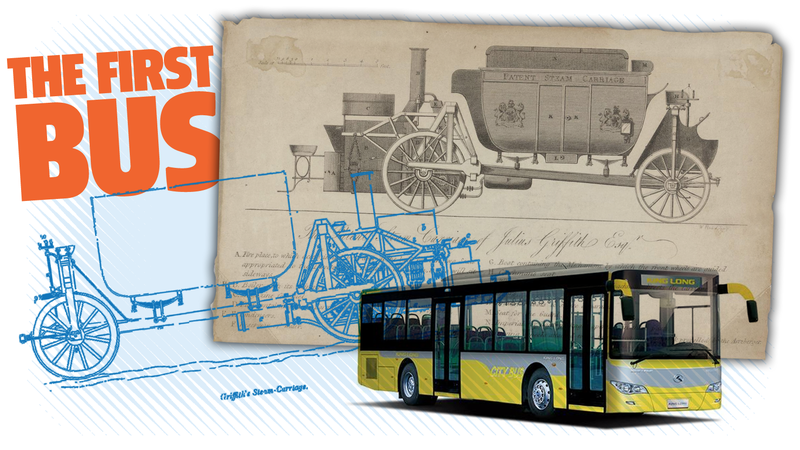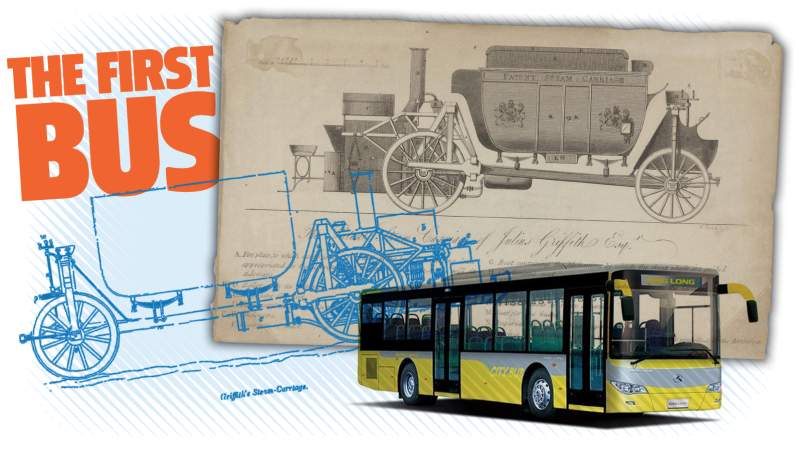
In general, the entire history of cars is much older than most people realize, partially because of Mercedes-Benz relentless misinformation campaign that they “invented” the car in 1886, and partially because most people just don’t really give a shit. But I do.
That’s why I’m so fascinated by the very early history of the automobile, and that’s also why I think we need to remember more about these pioneers. Pioneers like Julius Griffith, who built what is likely the first passenger bus way back in 1821.

Automobiles, of course, go back further, with Nicholas-Josef Cugnot’s Steam Drag of 1769 likely being the first real full-scale automobile, and the first mostly-successful (in that it at least worked) passenger car was Richard Trevethick’s London Steam Carriage of 1803.
Advertisement
The London Steam Carriage was designed to hold around four to six people, making it equivalent to a mid-size sedan, essentially a private passenger car. Because of the rarity of cars and their relative complexity and expense, those tinkering in this early era of automotive development would be smart to maximize their returns on their work, and develop vehicles capable of transporting more passengers, and instead of trying to make many copies of them for individual ownership, use them for a sort of private mass transport. Essentially, it made sense to try to build buses.
From what I can tell, the first automobile to be designed to carry a large number of passengers was invented by Julius Griffith, an engineer from Brompton-crescent, Middlesex, England, who was granted a patent for his steam bus in 1821:

Advertisement
The patent was also described in newspapers of the era:

Advertisement
I guess the bit about “partly communicated to him by foreigners” means he had some assistance from people who weren’t British?
The bus is operated by at least two people: one called the Director in the patent, who “manages the steam” and is seated at the rear of the bus, behind the large steam engine and boiler assembly. Up front sits the Coachman, responsible for steering this beast, and in between them is a carriage, suspended on leaf springs, that appears to be able to seat at least eight or twelve inside, with a seat for a guard on top, along with a roof-mounted cargo hold.
Advertisement
It’s really a pretty straightforward and rational design, and there’s no reason to think it wouldn’t have worked reasonably well, likely capable of six to eight MPH or so, if I had to guess? Maybe 10, on an incline? Hopefully not much of an incline, because I can’t find any references to how this thing was braked.
The patent drawing doesn’t show any windows, but, happily, it appears that the actual vehicle did have some, as other drawings all do seem to portray windows in the doors, at least, like this 1915 illustration:

Advertisement
Unlike many patents for steam carriages of this era, it seems that Griffith’s did actually manage to get built and worked. The actual one was built by the famous Victorian British engineering family and firm Bramah, with Francis Bramah’s Pimlico manufactory actually building the bus, as mentioned in period newspapers:

Advertisement
There’s not a lot of information about the career of this first bus, though it seems the powerful horse-carriage lobbies of the era made sure it wasn’t able to achieve much success. This was the case with most of the early British attempts at automobile mass transit, though they kept trying, with a bit of a boom happening in the 1830s with the success of Goldsworthy Gurney’s steam omnibuses.
Griffith is barely remembered in mainstream histories of the automobile, but that’s a shame, because I think it’s pretty clear that all passenger buses—from school buses to church buses to city buses to the rolling nightmares of Greyhound—all owe their existence to this daring initial attempt.
Advertisement
Thanks, Julius.













